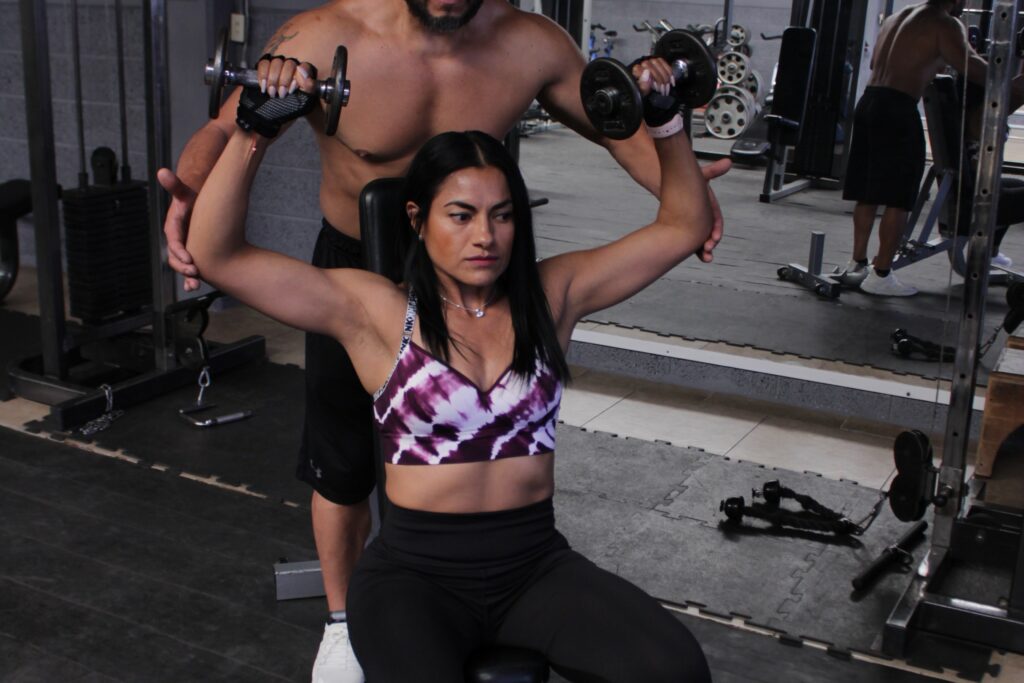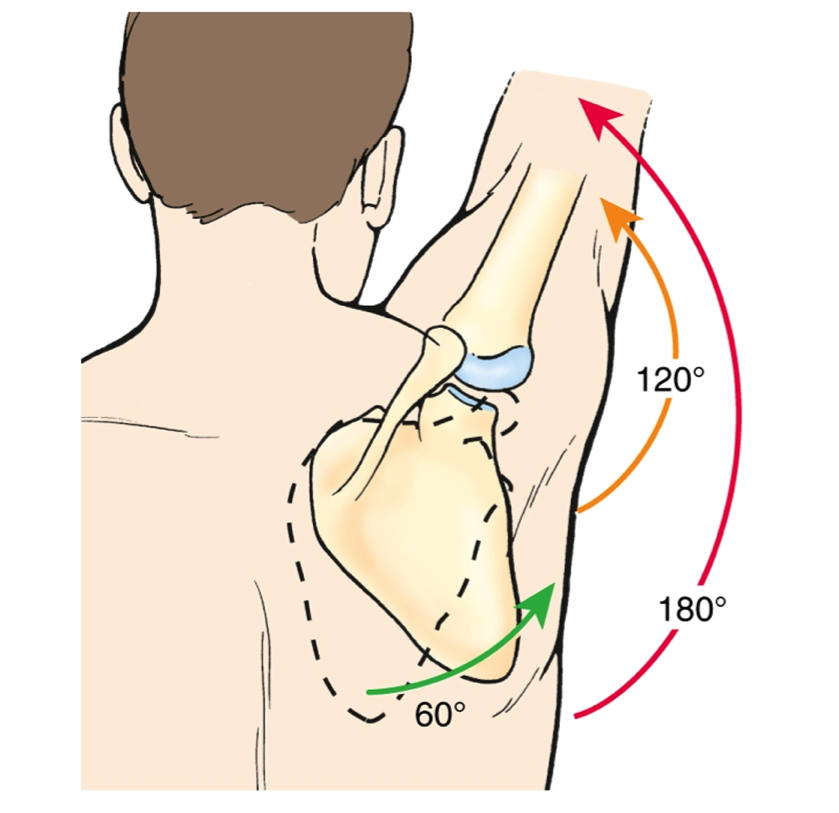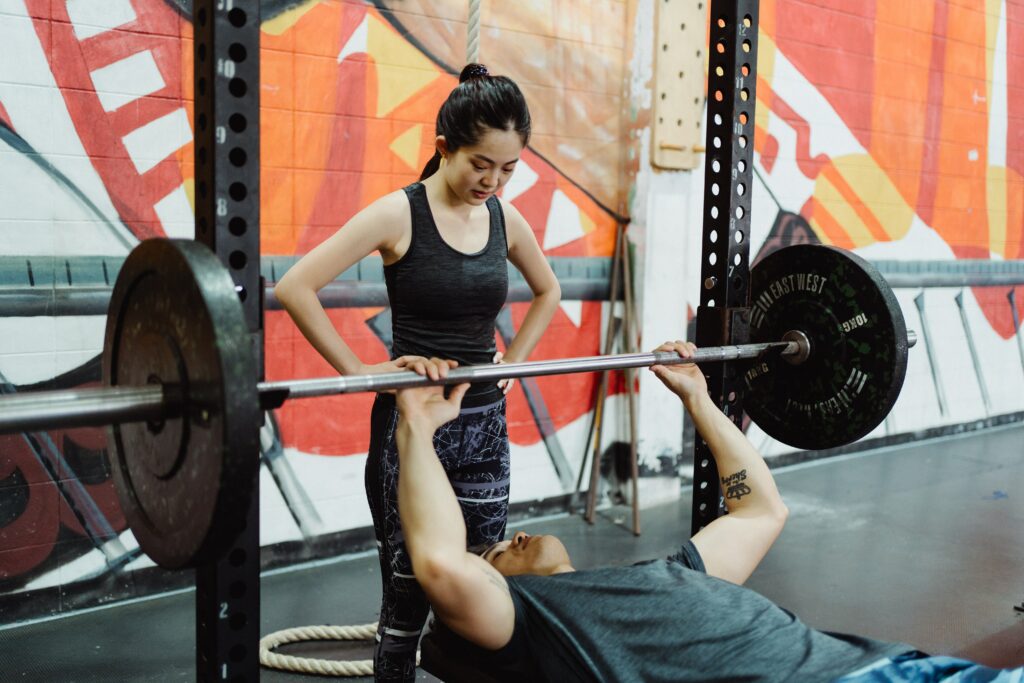If you’re reading this article, chances are it’s because of one of two reasons.
- Reason 1: You’re experiencing shoulder pain and want to find a solution for it.
- Reason 2: Your shoulders are currently pain-free, and you want to keep them that way.
In either case, you’ve come to the right place. Here, you’ll discover effective methods to alleviate shoulder discomfort, regain your mobility, and perform exercises without experiencing any pain. Let’s face it: nobody enjoys having shoulder pain, and what’s even worse is when you spend a lot of time doing exercises that don’t seem to solve the problem.
Shoulder pain can be categorized into two types. The first is acute pain, which occurs when you’ve done something that causes immediate discomfort in your shoulder. This type of pain is usually associated with specific movements. The second type is chronic pain, which is characterized by ongoing discomfort or a persistent dull ache.
No matter the circumstance, there are numerous shared factors that contribute to both types of shoulder pain. Several shoulder movements can greatly affect your ability to perform exercises without causing harm or discomfort. The mechanics of your shoulder are intricate, emphasizing the significance of proper exercise technique. However, as you’ll soon discover, there is one key factor that holds the utmost importance in healing and maintaining the health of your shoulders.
Why Do My Shoulders Hurt When Exercising?
If you’re dealing with mild discomfort or seeking preventive measures, this article can offer some guidance. However, if you’re experiencing severe pain that persists throughout the day, or if you’re recovering from a significant injury or surgery, it’s crucial to consult a medical professional and seek advice from your doctor or physical therapist.
Now, let’s dive into understanding your shoulder pain.
Shoulder pain is a common issue among individuals who engage in weightlifting. It’s not limited to amateurs or weekend warriors; even powerlifters, CrossFitters, bodybuilders, and Highland Games participants experience shoulder pain. Research on highly trained Olympic lifters has also revealed their struggles with shoulder discomfort.

The exercises that often contribute to this pain are pressing movements like the bench press or standing overhead press.
Let’s talk about these exercises. The actual movement itself is usually not the problem. In fact, the movement is relatively straightforward: you push the weight in a straight line, which is hard to mess up.
So, if the movement isn’t the root cause, what is? It’s the position your body assumes while performing the exercise. To illustrate this, let’s consider a simple example using the overhead press.
The Forgotten Aspect of Shoulder Pain
To better grasp why you experience shoulder pain, let’s draw a parallel with running. Imagine you rarely or never engage in running and suddenly find yourself sprinting multiple times. What’s likely to happen? You might strain a muscle, pull it, or sustain another injury resulting from transitioning abruptly from one extreme (no activity) to another (high-intensity reps).
The same principle applies to overhead movements. Throughout the day, most individuals rarely raise their arms above their heads. Instead, they spend their time in various hunched positions: peering at phones, staring at laptops, and slumping in desk chairs.
Over time, this lack of arm extension affects your mid and upper back, also known as your thoracic spine. Your ability to extend your upper back, characterized by a “head up, shoulders back” posture, diminishes. Instead, you find yourself in a rounded-forward hunchback position, which becomes your default stance.
The condition of your thoracic spine directly influences the range of motion in your shoulders. Insufficient thoracic spine extension limits the movement of your shoulder blades. The more your upper back resembles Quasimodo, the more challenging it becomes to position your shoulders correctly for overhead pressing.
In simpler terms, your struggle with movement arises because your shoulder blades lack the knowledge of how to move properly. Now, let me delve into some technical details to explain precisely why this issue can be such a pain in the neck… or rather, in your case, the shoulders.
Just remember this: if you cannot execute an overhead shoulder movement correctly, the surrounding structures near your shoulder blades are forced to compensate and work overtime. Similar to overworked aspects in life, they become easily irritated, leading to shoulder pain and potential injuries.
Why Your Shoulders Struggle with Mobility
Disclaimer: If you prefer to skip the detailed explanation behind the lack of mobility in your shoulders, feel free to skip the next 4 paragraphs.
To lift your arm overhead by 180 degrees, the scapula (the triangular bone resembling a wing on the backside of your shoulder) needs to rotate approximately 60 degrees.

The issue arises when this movement becomes challenging for you. If your thoracic spine is rounded forward, it hampers the mobility of your scapula, also known as the shoulder blade.
Consequently, to raise your arm overhead, you would need to compensate by moving the entire shoulder joint, which requires its structures to operate within a greater range of motion than they can handle correctly.
This limitation also affects the ability of the upper arm bone (humerus) to properly connect with the shoulder socket (glenoid fossa) and support the weight being lifted. Consequently, the soft tissues of your rotator cuff and joint capsule end up working overtime.
Think of scapula rotation as similar to hip mobility in a deadlift. If you can’t move your hips back far enough to grab the weight, something else must compensate for you to reach down and grip the bar. This is why many people experience back injuries during deadlifts.
Typically, that “something else” ends up being your lower back. And when your back takes over the role of your hips, it’s a recipe for injury.
The same principle applies to shoulder movement. If the smaller muscles and joint capsules are performing the tasks that should be handled by larger muscles like your deltoids, you might be able to get away with it for a while. However, it’s only a matter of time before issues arise.
The Misuse of Rotator Cuff Exercises
The Fire Hydrant Rule Based on the explanation provided earlier, it becomes clear why many individuals who engage in rotator cuff exercises to protect their shoulders are not utilizing their time effectively.
Performing endless band rotations (the exercises where you bend your elbow at a 90-degree angle, hold a resistance tube, and rotate your forearm to pull the tube away from your body) will not enhance the mobility of your thoracic spine. Certainly, these exercises can strengthen and empower your rotator cuff muscles. However, it’s akin to using a larger bucket to catch water from a fire hydrant instead of simply turning off the hydrant itself.
By addressing the underlying factors that contribute to poor shoulder mechanics, you can tackle the root cause of the problem and prevent issues from arising in the first place.
Why Bench Press Can Cause Shoulder Pain

The bench press can lead to shoulder pain, but the reason behind it is slightly different.
To set up correctly for the bench press, you need to bring your shoulder blades together and downward, creating a strong and stable foundation of support.
Here are the two main issues:
- Not everyone realizes that pulling their shoulders together and back is an essential part of the setup. (If this is news to you, now you know! You can confidently move forward and master the technique.)
- Some individuals are aware of the proper setup, but they lack sufficient mobility in their thoracic spine to effectively retract and tighten their shoulder blades.
In both cases, without the proper setup, the front of your shoulders ends up bearing the consequences.
When your shoulders aren’t pulled back and securely locked in place, as you lower the weight towards your chest, your upper arm bone needs to maneuver within the shoulder capsule to allow the bar to descend.
This can lead to a forward motion known as anterior glide. Anterior glide exerts significant pressure on the tissues responsible for maintaining joint integrity, such as the biceps tendon and rotator cuff muscles, potentially causing irritation or even damage.
How to Relieve Your Shoulder Pain
Here’s the good news: A significant portion of the issues related to overhead press and bench press stem from problems with your thoracic mobility and shoulder blade movement. By addressing these underlying problems, you can experience improved comfort during these exercises and many others.
Rather than focusing solely on numerous variations of rotator cuff exercises, let’s tackle the root causes of these common movement problems—specifically, issues with your thoracic spine and scapula. By doing so, you can lay the groundwork for more suitable shoulder-pressing movements while minimizing discomfort.
Relieving Shoulder Pain #1:
Breathe Right! To begin correcting your thoracic positioning, take a few minutes to engage in a simple breathing drill.
Now, you might be wondering, “Breathing? Really?” But trust me, it plays a significant role in your torso’s alignment.
Incorrect breathing habits often restrict the movement of your thoracic spine, which directly affects your shoulder mobility. So, when performing these drills, keep the following in mind:
- Take deep breaths, inhaling slowly and exhaling forcefully.
- Maintain a slow pace and focus on achieving greater movement rather than simply completing repetitions. Remember, quality always surpasses quantity.
Relieving Shoulder Pain #2
Foam Roll Like a Pro Now it’s time to introduce the foam roller and target the tissues in your thoracic spine. Pay close attention to the technique we’re about to discuss.
These movements are called T-Spine Extensions. Let’s clarify what they are not:
- It’s not about rolling around vigorously. In fact, if you watch the video again, you’ll notice that the foam roller remains stationary.
- It’s not about flaring your ribcage out to achieve excessive movement. Keep your abs engaged throughout the drill, so the movement solely comes from your upper back.
- The goal is not to touch the ground with the back of your head. We’re not trying to become super flexible here.
What you want to focus on is achieving a subtle upward and backward movement in your thoracic spine. It may be challenging to feel this motion initially, but with practice, you’ll gradually experience more freedom in your upper back and shoulders. That’s the desired outcome here.
Advanced Exercises to Relieve Shoulder Pain
By incorporating the exercises shown in the previous videos into your warm-up routine, you’re already on the path to improving your shoulder mechanics. But if you’re eager to take it a step further, you can dive deeper with the help of this video from The Complete Shoulder & Hip Blueprint:
In this video, you’ll discover even more impactful breathing drills that target the smaller muscles in your thoracic spine. These drills are so effective that you might notice some shaking during the workout.
The video begins with these breathing drills. And if you’re a fan of band rotator cuff exercises, get excited because later in the clip, you’ll come across band exercises that have a significant impact on enhancing your overall shoulder movement and positioning:
- Starting at 7:08, you’ll learn the “Band W” exercise, which activates the muscles around your shoulder blade and the lower part of your trapezius.
- At 8:56, Tony demonstrates two more band exercises—the Windshield Wiper and the Wall Walk—that target the muscles in your back, particularly your serratus muscles located on the sides of your ribs near your armpits. Bonus: Developing a strong serratus can contribute to achieving a desirable “V” shaped torso.
- Lastly, around the 12:12 mark, you’ll find a movement that allows you to address these issues on one shoulder at a time, which is beneficial for correcting imbalances.
You can incorporate these exercises as part of your warm-up routine, use them between sets of presses to maintain smooth motion, or even make them the main focus of your workout if you’ve been experiencing shoulder pain and want to improve your mechanics.
However, it’s important to reiterate that if your shoulders consistently hurt, it’s advisable to consult with a qualified therapist. They can provide specific guidance tailored to your needs and ensure these exercises won’t cause any harm (although they are generally safe, it’s always worth checking).
Here’s another crucial tip to remember when performing shoulder exercises: Engage your abs.
If you have limited mobility in your thoracic spine, a common mistake is to lean back with your lower back and neglect any movement in your upper back. This not only poses a risk but also hampers your progress since you’re simultaneously putting unnecessary strain on your lumbar spine while reducing tension on the targeted muscles. By bracing your abs, you can minimize these issues and ensure that you’re achieving movement in the intended areas.



